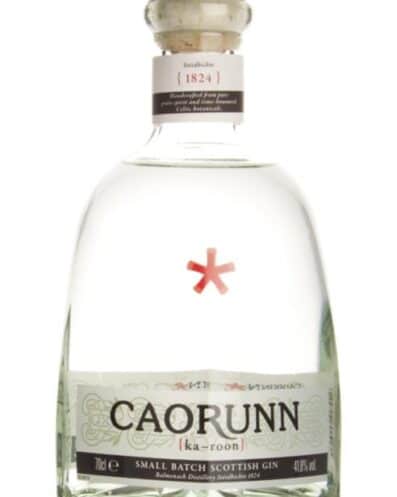Caorunn gin captivated me from the first time I heard about. Exotic botanicals are nothing new in modern gin. With Big names like Bombay getting into exotic ingredients designed to invoke a certain region, it shouldn’t be surprising that a gin coming out of Scotland would attempt to do something that invokes a certain vision of the pastoral and idyllic Scottish countryside.
The 5 Unique Botanicals (w/ Wikipedia references for those who are unfamiliar with the Botany of the Northern United Kingdom)
Coul Blush Apple: The UK telegraph reports that native apples are making a comeback, after being obscured beneath the mounds of cheaper imports like Granny Smith. “Makes a good sauce.”
Heather is a short shrub that grows in bogs all across Europe and parts of Asia.
Bog Myrtle is also known as “Sweet Gale” and is a short shrub common in nitrogen poor bogs in North America and Europe. Bog Myrtle was a common component of beer flavoring in Europe prior to the availability of hops.
Rowan Berry is a common wild tree in the UK. Often as small trees with bright orange-reddish berries.
And Dandelion leaf should be familiar to anyone who’s ever had a lawn.
These botanicals are in addition to a traditional gin bouquet, which oddly is what comes out when Caorunn gin is tasted.
Tasting notes
I found that to be the most striking thing upon tasting: It doesn’t taste all that different from a traditional gin. All of these exotic flavors go in, and the end product is smooth but traditional. The most prominent note is the juniper, but there’s subtle flavors of vanilla, burnt sugar and cinnamon. I’m not sure if those come from the five Scottish botanicals, or from the more traditional gin flavorings.
It works well in a Gin and Tonic, and my friends who were not gin drinkers seemed to enjoy Caorunn gin w/ Fresh muddled basil, blueberries and a bit of club soda (summer improv cocktail). But I couldn’t help but just feel a bit of disappointment.
There’s nothing wrong with a good London Dry gin, but when the marketing is focused around these five exotic herbs I expected something that tasted unmistakably like Scotland. Instead, it tasted like it could have been anywhere near London.
Overall, Caorunn Gin
One thing that Caorunn has interestingly done reminds me of the “point of difference” garnish with a cucumber thing that Hendrick’s has done really well. A gin and tonic is with a lime; Hendrick’s is with a cucumber. I think that Caorunn would like to be the gin and tonic with an apple slice. Its only too bad that as hard as I strained, I just couldn’t taste any definitive notes of apple in this gin.
Expectations are hard to overlook sometimes. While a solid gin, I think it could have been so much more.


Bog myrtle is strongly recommended here for making ‘krydderdram’ – cold-compound, single-botanical tinctures that are drank diluted with water, like absinthe. http://translate.google.com/translate?sl=auto&tl=en&js=n&prev=_t&hl=en&ie=UTF-8&layout=2&eotf=1&u=http%3A%2F%2Fwww.krydderdram.no%2Fplantene%2Fpors.php
I think it’s interesting that heather, bog myrtle and rowan berries are extremely common here as well. They are of course under consideration for my ‘arctic circle terroir’ cold compound project. ^_^ I’m almost a bit disappointed they’re around in Scotland too, though.
It seems like all truly unique flora around here is predictably endangered and protected. 😡
Scotland has a similar northern climate, right?
I’m excited to hear how your arctic circle terroir project comes out. And since Carroun sort of loses the opportunity to highlight these northern ingredients, I still think you have a chance to make bog myrtle the star of the show.
I saw this at a local small liquor store and decided to take the plunge. Ice wakes it up, but this Caorunn tastes more like vodka to me than gin. I get hardly ANY juniper. Very disappointing.
Subjective I know. But anyone really into gin will tell you Caorrunn is one of the best spirits on the market. What’s wrong with a gin just being a gin? I mean, god help us if everything tasted like Hoxton!
I’m not sure I see the consensus as straightforward as you. I think Caorunn has carved out an interesting niche in the market, but I think among experts and causal spirits drinkers, the opinion is very divided. I talk to a lot of folks for whom Caorunn might as well have been Hoxton with it’s not quite traditional gin feel.
An interesting spirit no matter how you like to enjoy it, Sure there’s some subjectivity. It really does come down to personal taste- so if Caorunn is yours, in that case, Cheers and keep enjoying!
I would agree with Ben Stones. I really like Caorunn, have been using it in all my G & Ts, and drinking it for a few years now. Can’t believe it got only 2.5 stars. I tkink it is ever bit as good as Hendricks!
I thought it was extremely disappointing and would not waste my time. Different strokes.
Just tasted it for the first time and was a bit disappointed. It is smooth and not as aggressive as cheaper alternatives, but it just lacks flavour in my opinion.
I was disappointed as well – given its price, I expected more. Hardly any juniper, and frankly not much flavor of any kind. I’ve tried it with several different tonics and it just gets lost. Tried it with an apple slice and …. nothing. Just way overrated, in my opinion. Hendricks has more complexity and is more interesting as an “herbal” gin.
I love this gin but I agree it could have a bit more oomph to it. I like subtle but this is almost to close to nondescript. But it does make very comfortable Gin and tonic, and with a dash of dry vermouth makes a good martini.
I found Caorunn gin in a book “Out of Bounds” by Val McDermid. So I searched for it on on the Mozilla Firefox internet search engine. So now I have to find a shop that sells it in Queensland (Caloundra; Sunshine Coast). Val McDermid plus your website make it sound worth trying.
And no!e: I absolutely will not use Microsoft, nor Google: they are all very nasty people.Try an ad on Firefox instead.